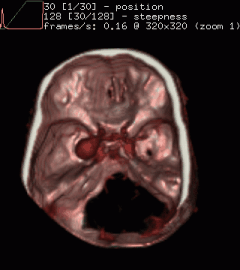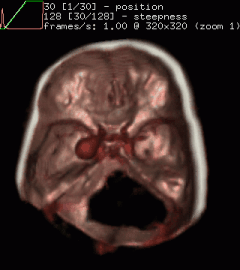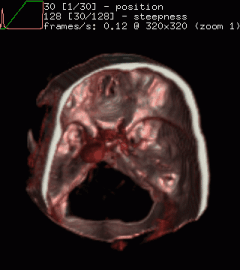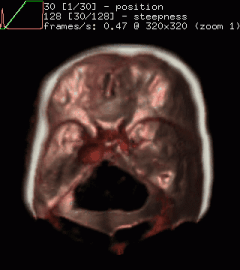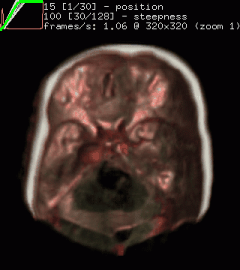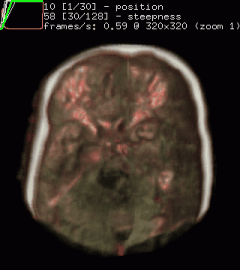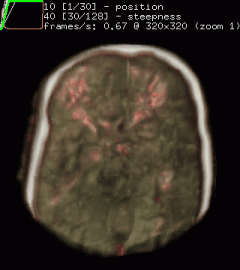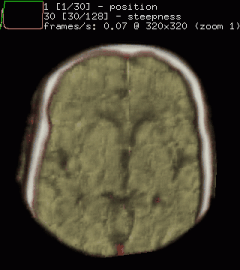Extended Light Fields
Extended Light Fields
Light field rendering is a new image based rendering method, i.e. a new image is produced from other existing images. This is fast and independent from the complexity of the scene, so rendering of complex objects becomes possible at interactive rates using this precalculation.
Example
These are images rendered from a human head with traditional methods (Volpack) and an extended light field (head.lif in examples.tar.gz) that stores 256 such images of size 256x256 at 8 parameter combinations:
Download
- thesis as postscript: black and white text part (231KB gzipped) plus appendix (colour images, 2MB gzipped)
- lightpack V1.1alpha source, 161KB gzipped
- examples.tar.gz (15MB)
Links
Here are some links that I have collected for this project:
- Light field project (Stanford)
- Lumigraph (Steven J. Gortler/Harvard)
- Time Critical Lumigraph Rendering (Peter-Pike J. Sloan/Utah)
- Image-based Rendering with Controllable Illumination
- Research Interests of Glenn Tsang
- Emilio Camahort - Uniformly Sampled Light Fields
- Modeling and Rendering of Metallic Patinas
- VolVis Project Home Page
- The VolPack Volume Rendering Library
- Blue Moon Rendering Tools Home Page
- RenderMan Repository Top
- The Mesa 3-D graphics library
- Intel MMX Technical Manuals


